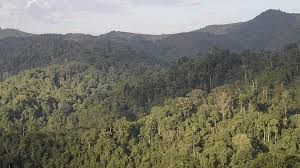Rwanda’s fourth national park, Gishwati Mukura, made up of two separate forests – the larger Gishwati and Mukura, forming a total of 34 square kilometres plus a buffer zone has been inscribed on the World Heritage List as a natural site, an official source confirmed Thursday in Kigali.
The decision to inscribe this protected area on the United Nations Educational, Scientific and Cultural Organization’s (UNESCO) World Heritage List was unanimously supported by all members of the World Heritage Committee, the statement issued by the ministry of Environment in Kigali said.
It said that this inscription demonstrates the firm commitment of Rwanda to the conservation of the world heritage.
Gishwati is home to a group of 20 chimpanzees which live alongside golden monkeys, L’Hoest’s and Blue Monkeys.
Birds are well represented too with 232 species seen at Gishwati and 163 at Mukura, among them Albertine Rift Endemic species and forest specialists.
The park is currently part of an ambitious landscape restoration program.
Activities in the park began in 2019 and include a guided nature hike, guided chimp and monkey tracking, bird watching and a visit to the waterfalls.
The area was nearly depleted largely due to resettlement, illegal mining in the mineral-rich forest and livestock farming.
Gishwati-Mukura national park currently contributes to improving the livelihoods of the population living in the surrounding areas, which in turn offers the forest a better chance of regeneration in tandem with the potential to raise living standards in the longer term.
Community-based activities include a farm stay, a live cultural dance, making handicrafts, beekeeping, a tea plantation tour and the chance to learn from traditional healers, who use natural plants to support modern medicine and synthesised drugs.
CU/as/APA


